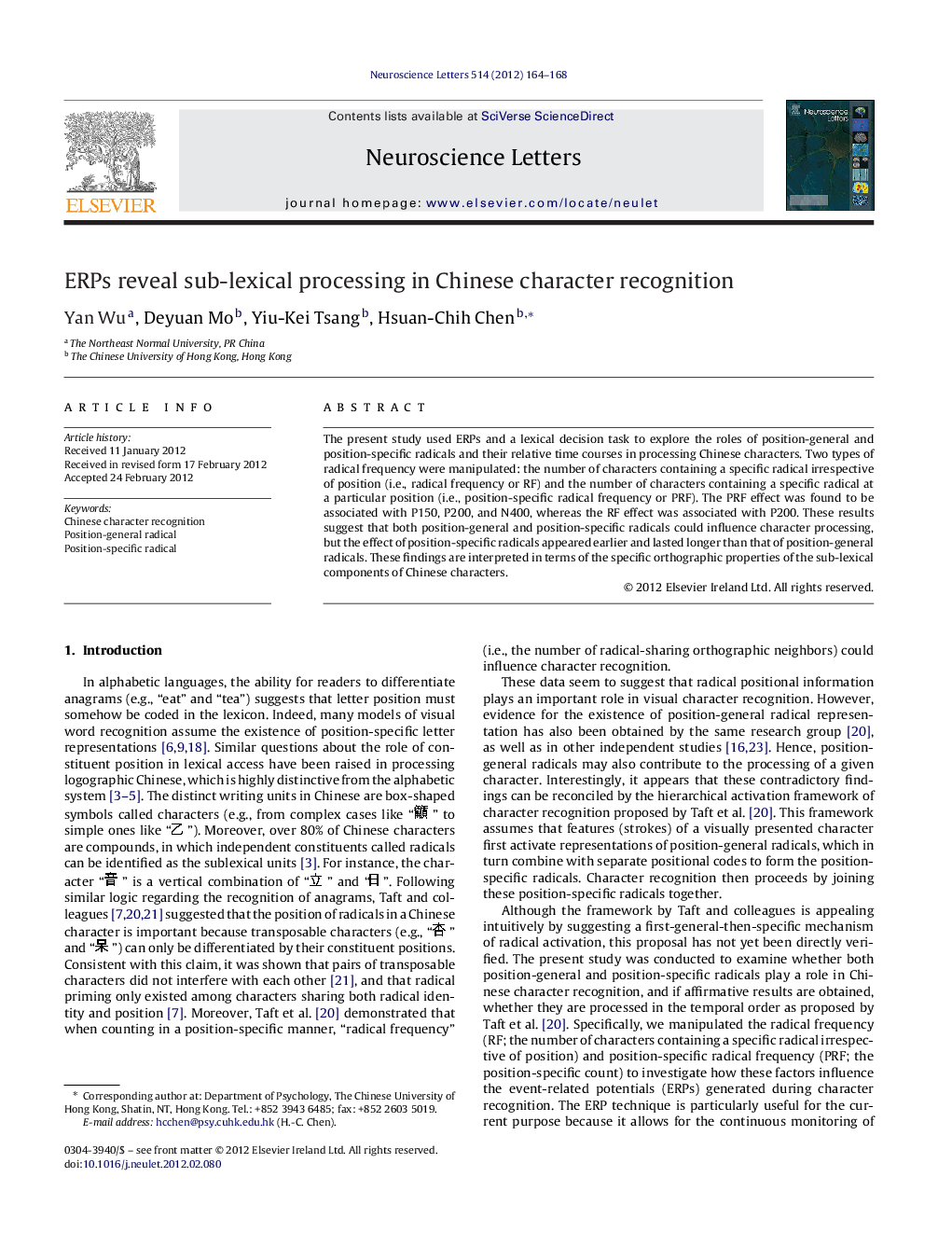| Article ID | Journal | Published Year | Pages | File Type |
|---|---|---|---|---|
| 4344667 | Neuroscience Letters | 2012 | 5 Pages |
The present study used ERPs and a lexical decision task to explore the roles of position-general and position-specific radicals and their relative time courses in processing Chinese characters. Two types of radical frequency were manipulated: the number of characters containing a specific radical irrespective of position (i.e., radical frequency or RF) and the number of characters containing a specific radical at a particular position (i.e., position-specific radical frequency or PRF). The PRF effect was found to be associated with P150, P200, and N400, whereas the RF effect was associated with P200. These results suggest that both position-general and position-specific radicals could influence character processing, but the effect of position-specific radicals appeared earlier and lasted longer than that of position-general radicals. These findings are interpreted in terms of the specific orthographic properties of the sub-lexical components of Chinese characters.
► Both position-general and -specific radicals affect Chinese character recognition. ► ERPs reveal the time course of sub-lexical processing in character recognition. ► Effects of position-specific radicals appeared earlier and lasted longer.
